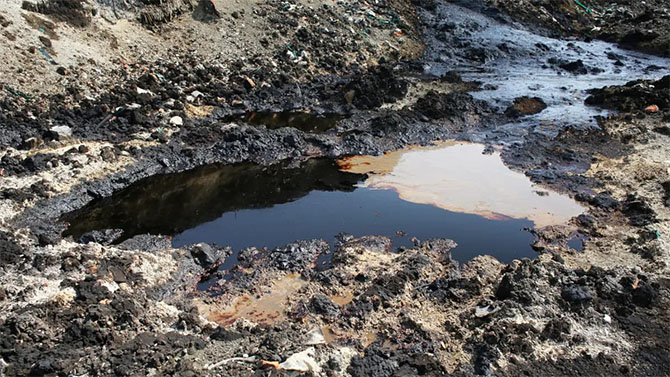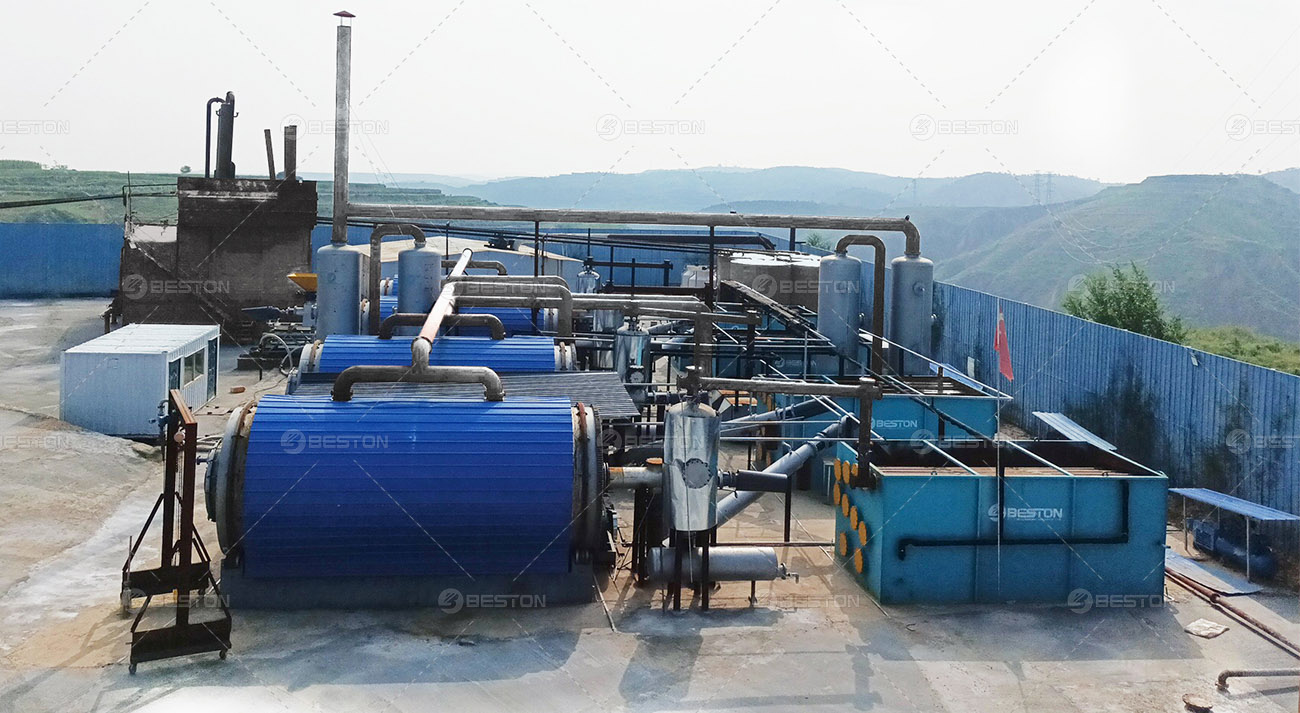In the realm of managing oil-based cuttings, pyrolysis emerges as a promising avenue. This innovative method offers a sustainable solution for dealing with oil sludge, transforming it into valuable resources. With the aid of modern technology, particularly oil sludge pyrolysis plant, the potential for efficient disposal is significantly heightened.

Understanding Pyrolysis
Pyrolysis, at its core, is a decomposition process in TDU unit where organic materials transform in the absence of oxygen. This technique holds immense potential for handling oil-based cuttings due to its ability to break down complex hydrocarbons into simpler compounds.
The Mechanism
At elevated temperatures ranging from 400 to 800 degrees Celsius, oil sludge is subjected to pyrolysis within a controlled environment. The absence of oxygen prevents combustion, leading to the breakdown of organic matter into three primary products: gas, liquid, and solid residues.
Gas Fraction
The gaseous byproducts of pyrolysis, including methane, ethane, and hydrogen, possess significant energy potential. Through proper processing, these gases can be utilized as fuel sources or further refined for industrial applications.
Liquid Fraction
Pyrolysis yields a liquid phase known as bio-oil or pyrolysis oil. This viscous substance contains a mix of hydrocarbons suitable for various purposes, such as fuel production, chemical synthesis, or as a feedstock for refineries.
Solid Residues
The solid residues, often referred to as char or biochar, retain carbonaceous material along with inert components. These residues can be utilized as soil amendments, aiding in soil fertility and carbon sequestration.
The Role of Oil Sludge Pyrolysis Plants
The oil sludge pyrolysis plant serves as the cornerstone for implementing this disposal method effectively. These specialized facilities are equipped with advanced technology tailored to the intricacies of pyrolysis processes.
Process Integration
Oil sludge pyrolysis plants integrate various stages, including feeding, heating, pyrolysis reaction, and product recovery. Each step is meticulously controlled to ensure optimal efficiency and product quality.
Feeding System
A crucial component of these plants is the feeding system, designed to introduce oil-based cuttings into the pyrolysis reactor accurately. Automated mechanisms ensure a continuous supply of feedstock, minimizing downtime and maximizing throughput.
Heating Mechanism
The heating mechanism, often employing indirect heating methods like rotary kilns or fluidized beds, facilitates the thermal decomposition of oil sludge. Precise temperature control is maintained to achieve the desired pyrolysis conditions.
Pyrolysis Reactor
Central to the process is the pyrolysis reactor, where oil sludge undergoes transformation under controlled temperature and pressure conditions. The reactor design influences residence time, heat transfer efficiency, and product yields.
Product Recovery
Efficient separation and recovery systems are employed to isolate the gas, liquid, and solid fractions produced during pyrolysis. Advanced separation techniques ensure high purity and quality of the derived products.
Beston Group China, as a leading pyrolysis plant manufacturer, provides technologically advanced equipment.
Advantages of Pyrolysis for Oil-Based Cuttings Disposal
Pyrolysis offers several distinct advantages over traditional disposal methods, making it an attractive option for managing oil-based cuttings effectively.
Environmental Sustainability
By converting oil sludge into useful products, pyrolysis minimizes environmental impact, mitigating the risk of soil and water contamination associated with conventional disposal techniques.
Resource Recovery
Pyrolysis enables the recovery of valuable resources from oil-based cuttings, including energy-rich gases, liquid fuels, and carbon-rich solids. This resource recovery aspect adds economic value to the process.
Reduction of Hazardous Waste
Traditional methods often result in hazardous waste generation, posing significant challenges for disposal. Pyrolysis reduces the volume of waste while converting hazardous materials into useful products or inert residues.
Energy Independence
The energy-rich products derived from pyrolysis, such as bio-oil and syngas, contribute to energy independence by providing alternative sources of fuel and feedstock, reducing reliance on fossil fuels.

Challenges and Considerations
Despite its potential, pyrolysis for oil-based cuttings disposal is not without challenges and considerations that warrant attention.
Capital Investment
Establishing oil sludge pyrolysis plants requires significant capital investment due to the complex infrastructure and specialized equipment involved. Initial investment costs must be carefully evaluated against long-term benefits. This way we can break even with the cost of pyrolysis plant.
Operational Efficiency
Achieving optimal operational efficiency relies on maintaining consistent feedstock quality, optimizing process parameters, and minimizing energy consumption. Continuous monitoring and process optimization are essential for maximizing performance.
Regulatory Compliance
Compliance with environmental regulations and safety standards is paramount in the operation of pyrolysis plants. Stringent regulatory requirements govern emissions, waste disposal, and occupational health and safety.
End-Product Utilization
The utilization of pyrolysis products, particularly bio-oil and solid residues, must align with market demands and regulatory frameworks. Developing viable markets for these products is crucial for ensuring the economic viability of the process.
Conclusion
In conclusion, pyrolysis presents a viable solution for the disposal of oil-based cuttings, offering environmental sustainability, resource recovery, and energy independence. Oil sludge pyrolysis plants play a pivotal role in implementing this technology, enabling efficient conversion of waste into valuable products. Despite challenges, the potential benefits of pyrolysis underscore its significance in addressing the complex issue of oil-based waste management. As technology advances and regulatory frameworks evolve, pyrolysis is poised to become a cornerstone of sustainable waste disposal practices in the oil and gas industry.